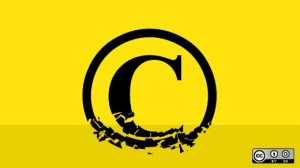I think that finding and using openly licensed resources is a crucial aspect of modern education, especially in the context of open education initiatives. As an educator, I believe that incorporating openly licensed resources into teaching materials can greatly enhance the learning experience for students and promote a culture of sharing and collaboration. Like many others, I have utilized online resources that are freely available without seeking explicit permission from the original author, assuming that it is ok if it serves a greater purpose, particularly in the context of education and benefiting students. I was wrong, and I am so thankful to the ONL course and Jörg for showing and learning us how we can do this in a right way. This is my first cc:

“Copyright license choice” by opensourceway is licensed under CC BY-SA 2.0.
One of the key benefits of openly licensed resources is their accessibility. By utilizing materials that are openly licensed, educators can ensure that students have access to a wide range of high-quality resources without facing barriers such as cost or restrictive copyright limitations. In PBL group we discussed the levels of openness, and regarding that, I believe it would be appropriate to adopt a balanced approach that considers both individual and institutional perspectives. This could include openly sharing course materials and resources while respecting intellectual property rights and privacy concerns. This accessibility fosters inclusivity and allows for a more equitable learning environment.
Most university learning management systems (LMS) like Moodle or Canvas offer opportunities for openness through features such as open access to course materials, collaborative platforms, and integration with OER repositories. The emergence of AI tools further enhances the potential of open education by offering personalized learning experiences and automating certain aspects of teaching, such as grading and feedback. However, it’s crucial to consider the ethical implications and ensure that AI is used responsibly and inclusively in education.
Additionally, at least in my case, these openly licensed resources encouraged my creativity and innovation in teaching practices. Educators can adapt and modify these resources to suit their specific teaching objectives and the needs of their students. To me this flexibility enables personalized learning experiences and empowers educators to explore diverse teaching methods.
Moreover, using openly licensed resources promotes a culture of openness and sharing within the educational community. By sharing resources that they have created or adapted, educators contribute to a collective pool of knowledge and expertise. This sharing not only benefits other educators but also strengthens the overall quality of educational materials available.
However, it’s essential to approach the use of openly licensed resources ethically and responsibly. Educators should ensure that they adhere to the terms of the licenses associated with these resources, giving proper attribution and respecting any restrictions or conditions specified by the licensor.
So, finding and using openly licensed resources is a valuable practice that can enrich teaching and learning experiences. By embracing openness and collaboration, educators can contribute to a more accessible, innovative, and inclusive educational landscape.
Cronin, C. (2017). Openness and praxis: Exploring the use of open educational practices in higher education. International Review of Research in Open and Distributed Learning, 18(5), 15-34. https://doi.org/10.19173/irrodl.v18i5.3096
April 11, 2024 at 9:03 am
I agree with your views. It’s much more beneficial to be open than closed. Therefore, I both use and create creative commons materials – a concept that I learned about through ONL. Using and building on existing materials is also a sustainable approach to teaching.
April 11, 2024 at 9:46 am
Indeed, it’s a commendable approach that benefits both educators and learners alike.